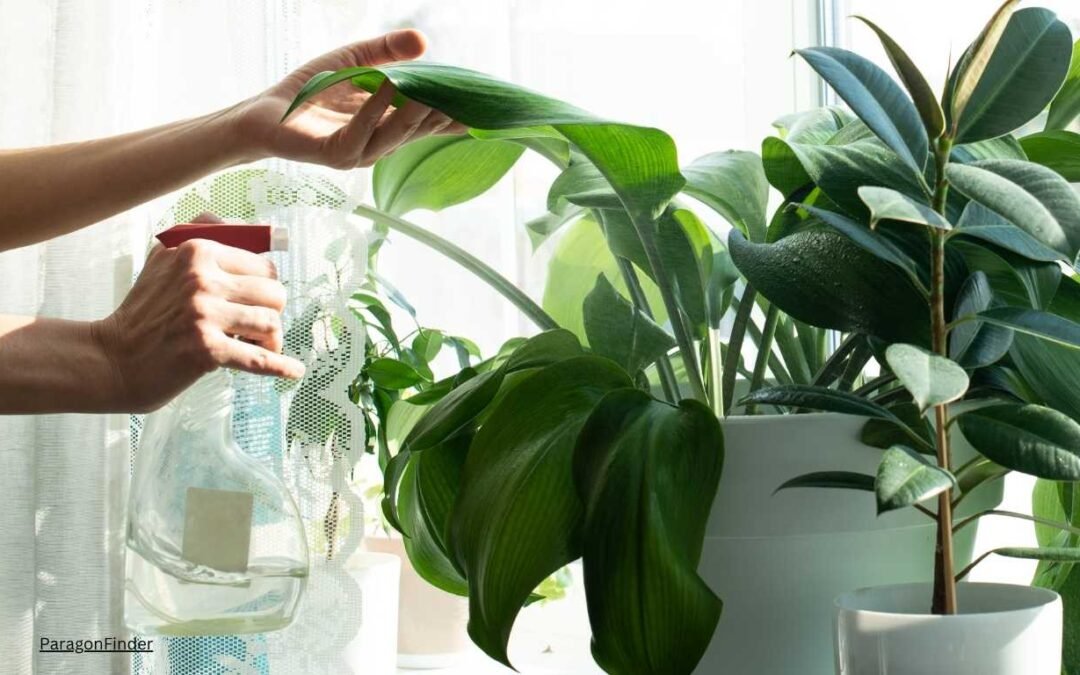Indoor plants bring a touch of nature into your home, improve air quality, and create a soothing environment. If you’re a beginner, selecting the right plants can make all the difference. Here, we’ll explore the best 15 indoor plants for beginners, offering expert recommendations and personal insights to ensure your green thumb journey is a success.

1. Snake Plant (Sansevieria trifasciata)
Why it’s great: Snake plants are nearly indestructible. They tolerate low light and infrequent watering, making them perfect for beginners.
Expert Tip: Allow the soil to dry out completely between waterings. Overwatering is the most common mistake.
2. Pothos (Epipremnum aureum)
Why it’s great: Pothos is known for its trailing vines and can thrive in a variety of lighting conditions.
Expert Tip: Prune regularly to encourage bushier growth and propagate cuttings in water to expand your plant collection.
3. ZZ Plant (Zamioculcas zamiifolia)
Why it’s great: ZZ plants are extremely low-maintenance and can survive in low light and drought conditions.
Expert Tip: Clean the leaves occasionally to help the plant absorb more light.
4. Spider Plant (Chlorophytum comosum)
Why it’s great: Spider plants are resilient and produce “babies” that can be propagated easily.
Expert Tip: Place in bright, indirect light and keep the soil slightly moist.
5. Peace Lily (Spathiphyllum)
Why it’s great: Peace lilies are beautiful and forgiving, showing you when they need water by drooping.
Expert Tip: Peace lilies prefer low to medium light and high humidity. Mist the leaves regularly.
6. Aloe Vera
Why it’s great: Aloe Vera is not only easy to care for but also has medicinal properties.
Expert Tip: Ensure it gets plenty of bright, indirect light and allow the soil to dry out between waterings.
7. Philodendron
Why it’s great: Philodendrons adapt well to indoor conditions and are easy to care for.
Expert Tip: Keep the soil consistently moist and provide indirect light for optimal growth.
8. Rubber Plant (Ficus elastica)
Why it’s great: Rubber plants are hardy and can grow quite large, making a statement in any room.
Expert Tip: Wipe the leaves with a damp cloth to keep them dust-free and shiny.
9. Jade Plant (Crassula ovata)
Why it’s great: Jade plants are known for their longevity and easy care requirements.
Expert Tip: Place in a sunny spot and water sparingly. These succulents store water in their leaves.
10. Chinese Evergreen (Aglaonema)
Why it’s great: Chinese evergreens are tolerant of low light and infrequent watering.
Expert Tip: Rotate the plant occasionally to ensure even growth on all sides.
11. Dracaena
Why it’s great: Dracaenas come in various shapes and sizes and are quite forgiving.
Expert Tip: Keep away from direct sunlight to prevent leaf burn and water when the top inch of soil is dry.
12. Cast Iron Plant (Aspidistra elatior)
Why it’s great: True to its name, the cast iron plant is extremely tough and can survive in low light and neglect.
Expert Tip: Water sparingly and place in low to medium light for best results.
13. English Ivy (Hedera helix)
Why it’s great: English Ivy is versatile and can be grown in pots or as a hanging plant.
Expert Tip: Keep the soil moist and provide bright, indirect light for lush growth.
14. Fiddle Leaf Fig (Ficus lyrata)
Why it’s great: Fiddle leaf figs have large, beautiful leaves that make a dramatic statement.
Expert Tip: They prefer bright, indirect light and consistent watering. Avoid moving them too often as they can be sensitive to changes.
15. Boston Fern (Nephrolepis exaltata)
Why it’s great: Boston ferns add a touch of classic elegance to any space with their lush fronds.
Expert Tip: They thrive in humid environments, so mist regularly and keep the soil consistently moist.
Expert Recommendations for Indoor Plant Care
Light Requirements
Understanding the light requirements of your plants is crucial. While some plants thrive in low light, others need bright, indirect light. Place plants accordingly to prevent issues like leggy growth or sunburned leaves.
Watering Techniques
Overwatering is a common mistake. Ensure that the soil has good drainage and allow the top inch to dry out before watering again. Using a moisture meter can help you determine when your plants need water.
Humidity and Temperature
Most indoor plants prefer a humid environment and stable temperatures. Grouping plants together can create a microclimate, or you can use a humidifier to increase humidity. Keep plants away from drafts and heating vents.
Soil and Fertilization
Use a well-draining potting mix suitable for your specific plants. Fertilize during the growing season (spring and summer) with a balanced, water-soluble fertilizer to promote healthy growth.
Pruning and Cleaning
Regular pruning helps maintain plant shape and encourages new growth. Cleaning the leaves with a damp cloth removes dust and allows the plant to photosynthesize more efficiently.
Repotting
Repot your plants when they outgrow their containers. Signs that a plant needs repotting include roots growing out of the drainage holes and soil that dries out quickly after watering.
Personal Insights for Indoor Plant Success
Start Small
If you’re new to indoor gardening, start with a few easy-to-care-for plants. As you gain confidence, you can expand your collection.
Observe Your Plants
Spend time observing your plants. Look for signs of stress, such as yellowing leaves or drooping stems, and adjust care routines as needed.
Create a Routine
Develop a regular care routine. Check your plants weekly for water, prune as necessary, and clean the leaves.
Experiment and Learn
Don’t be afraid to experiment. Move plants to different locations, try different watering schedules, and see what works best for each plant.
Join a Community
Join online forums or local gardening groups to share experiences and get advice from fellow plant enthusiasts.
Keep Learning
There’s always more to learn about indoor gardening. Read books, watch videos, and stay curious about your plants’ needs.
Enjoy the Journey
Finally, enjoy the process. Indoor gardening is a rewarding hobby that can bring joy and relaxation to your life.
By following these expert recommendations and personal insights, you’ll be well on your way to creating a thriving indoor garden. Remember, the best 15 indoor plants for beginners are just the start. With time and care, your indoor garden can grow into a lush, green oasis.

